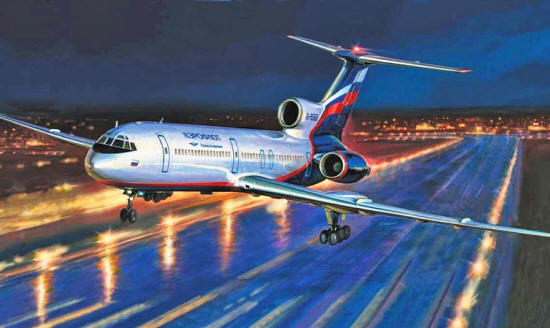|
An unarmed Russian Tupolev Tu-154M Air Force jet flew over Washington (below video) on August 9, additionally passing over the New Jersey golf course where President Donald Trump was vacationing.
It passed over,
The story made a splash against the background of simmering tensions between the United States and Russia.
For example, Politico wrote that,
Some social media users concurred with this assessment, regarding the observation flight as trolling.
Trolling or not, the flight (the tenth one this year) was permitted through the Treaty on Open Skies, which allows 34 signatory nations to fly observation flights over the other countries' military and related sites.
The compliance is monitored by the Organization for Security and Cooperation in Europe (OSCE).
Over 1,200 flights have been conducted worldwide through the treaty, which allots active and passive quotas to the signatory states based on the size of their territories.
Before making a flight, the observing state has to provide a notice of at least 72 hours in advance.
A mission plan also needs to be provided to the host state. Changes can be suggested by the host state, citing security concerns. Before flights, each host nation is given the flight plan of the mission and a verification team fly aboard the aircraft to make sure the crew complies with the treaty.
After the flight, the host nation receives a copy of any imagery data collected by the observation aircraft.
Over the past 15 years, the U.S. and Russia have done this a combined 165 times. The United States has a quota of 42 Treaty overflights per year and is obligated to accept the same number over its territory.
It carries out similar surveillance flights using an OC-135B, an Air Force observation jet. U.S. Air Force personnel were also on the Tu-154 plane flying over Washington acting as escorts.
The flights are opposed by some senior U.S. intelligence and military officials who have expressed concern that Russia is taking advantage of technological advances to violate the spirit of the treaty.
Steve Rademaker, former Assistant Secretary of State for the Bureau of Arms Control and the Bureau of International Security and Non-proliferation, told Congress in past hearings that Russia complies with the Open Skies Treaty, but has adopted measures that are inconsistent with the spirt of the accord.
The treaty, for instance, obligates each member to make all of its territory available for aerial observation, yet Rademaker said Russia has allegedly imposed restrictions on surveillance over Moscow and Chechnya and near Abkhazia and South Ossetia.
But Moscow has never been officially accused of any violations.
The U.S. Congress is moving decisively to start dismantling the Open Skies along with some other bedrock arms control treaties.
In a series of measures attached to the proposed $696 billion National Defense Authorization Act for 2018, lawmakers have taken aim at the agreement.
The bill limits funding related to the Open Skies Treaty and would forbid the U.S. to modernize its own equipment, no matter how ridiculous it sounds. It's like cutting off one's nose to spite the face!
And then they'll raise hue and cry over Russia using more sophisticated equipment to make the treaty less advantageous for the United States.
Calls for prohibition of Russian flights over the U.S. territory are also heard.
In February 2016, some Republicans criticized Russia's request to equip their planes with high-definition cameras, considering it a form of spying.
But who stands in the way of U.S. Air Force installing more modern devices on board of its planes carrying out Open Skies missions? The answer is - the House of Representatives if the bill will not be amended.
They call it "spying", so what...?
The treaty's purpose is to allow information gathering. You can call it spying but it's legal and the imagery received is shared. The U.S. aircraft do the same thing when overflying Russia.
The White House believes that a prohibition on funds for a digital imaging system for U.S. sensors and aircraft would prevent the U.S. from keeping pace with Russian sensor upgrades and lead to wasteful fees for breach of contract.
The administration wants the agreement to be in force and complied with.
The Open Skies Treaty continues to be a valuable instrument for security and stability at the time of arms control crisis. There is actually not much left. The fate of the Intermediate Range Nuclear Forces Treaty is questioned.
The New START will expire in 2012 with no talks held on what to do next.
Under the circumstances, the Open Skies Treaty plays a very important role at the time the world faces the most serious and comprehensive crisis in the fifty-year history of nuclear arms control with almost every channel of negotiation deadlocked and the entire system of existing arms control agreements in jeopardy.
With the treaty in force, the U.S. gains as much as Russia as it overflies the Russian territory, too. Everybody wins and nobody loses, with transparency enhanced and the risk of war and miscalculation reduced.
The Open Skies Treaty is an instrument to obstruct the process of arms control erosion and sliding to an unfettered arms race.
|


